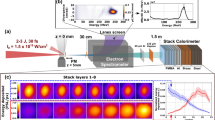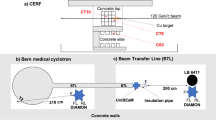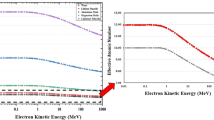Abstract
IN the course of investigation on -rays excited by neutrons, we have recently determined the absorption curves of the secondary electrons due to -rays emitted from 24 elements, namely, H, Al, Cl, K, Ti, Cr, Mn, Fe, Ni, Co, Cu, Zn, As, Se, Br, Y, Ag, Cd, Sb, I, Sm, W, Au and Hg, under the bombardment of slow neutrons, by means of the method of coincidence of two counters. The form of the curves obtained differs considerably from element to element, and the ratio of the half-value thickness to the maximum range of the electrons is by no means a constant for different elements, indicating the inappropriateness of the use of the former as the measure of -ray energy. The difference in the form of absorption curves should, of course, be understood to be due to the different heterogeneity of -rays.
This is a preview of subscription content, access via your institution
Access options
Subscribe to this journal
Receive 51 print issues and online access
$199.00 per year
only $3.90 per issue
Buy this article
- Purchase on Springer Link
- Instant access to full article PDF
Prices may be subject to local taxes which are calculated during checkout
Similar content being viewed by others
Author information
Authors and Affiliations
Rights and permissions
About this article
Cite this article
KIKUCHI, S., HUSIMI, K. & AOKI, H. Quantum Energy of -Rays Excited by Slow Neutrons. Nature 137, 992–993 (1936). https://doi.org/10.1038/137992b0
Issue Date:
DOI: https://doi.org/10.1038/137992b0
This article is cited by
-
�ber die Koppelung der ?- und ?-Strahlen des Radio-Mangans und die Energieniveaus des stabilen Eisenkerns
Die Naturwissenschaften (1939)
Comments
By submitting a comment you agree to abide by our Terms and Community Guidelines. If you find something abusive or that does not comply with our terms or guidelines please flag it as inappropriate.



